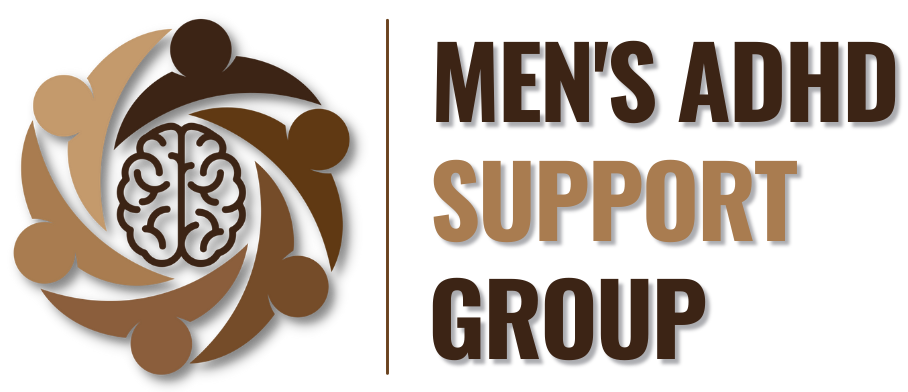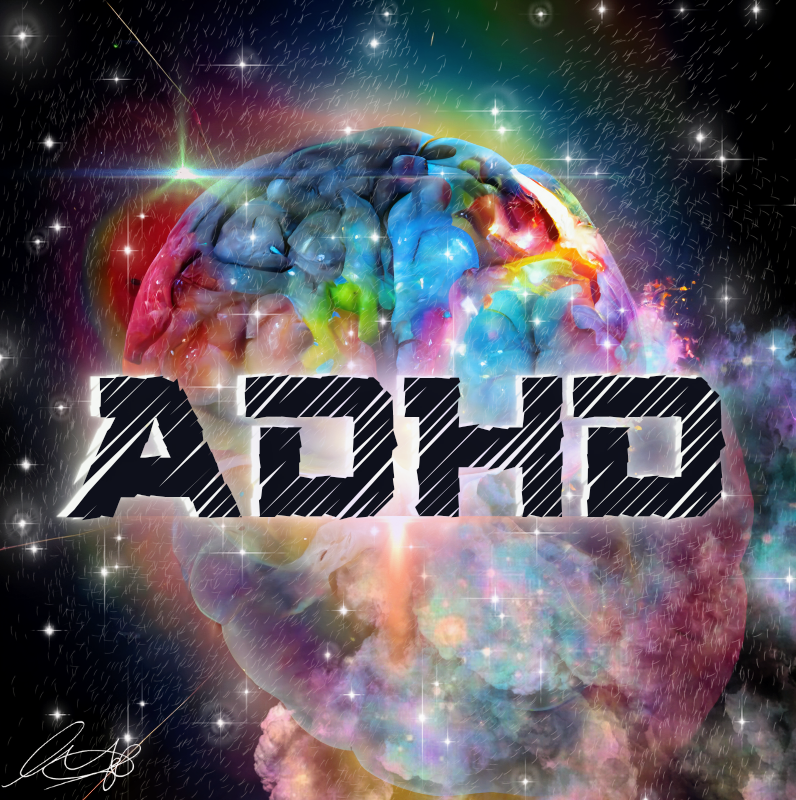
ADHD EXPLAINED
ADHD stands for attention deficit hyperactivity disorder. Many doctors and scientists consider ADHD to be a complex brain neurotype. In the DSM-5 it is described as a developmental impairment of the brain’s motivation, emotional, memory, and focusing self-management system.
The primary issue with ADHD is that there is a lack of dopamine production or dopamine is absorbed too quickly within the various systems of the brain. Most people who have ADHD are born with it, and it is something that we live with all of our lives.
Some of the most prevalent symptoms that we see with people that have ADHD are issues with impulsivity, emotional dysregulation, focusing, and organization.
There have been many advances in neuroscience, brain imaging, and clinical research that have shown us a few important things: ADHD is not a behavior disorder. ADHD is not a mental illness. ADHD is not a learning disability.
The brain in people with ADHD is functionally different than that of people who are considered “neurotypical”. It processes differently, it has different wiring, and the functions of the brain react differently to internal and external stimuli.
There are specific genetic components that have been identified that exist in people who have ADHD that show that if a child has ADHD, there’s a statistically high likelihood that one or both of the parents have ADHD.
What is ADHD?
How is adhd Diagnosed?
There are a lot of different ways to diagnose ADHD. One thing that many professionals advise is that if you suspect that you have ADHD that you need to see a psychiatrist to get diagnosed.
Many general practitioners, especially older doctors, may have never really been trained to recognize Adult ADHD, so if you have access to a psychiatrist, try to work with them to get diagnosed. If you do not have any choice, then a general practitioner will work, but be clear that you think that you have ADHD and ask to get tested for it.
Another reason to get seen by a psychiatrist is because of comorbidities that are common with ADHD. Comorbidities such as:
Autism
Depression
Anxiety
PTSD
And many others.
The reason that this is needed is that there are different ways that these things need to be treated in conjunction with ADHD. An example is Autism. Autism can not be treated with medication, and requires specific types of therapy to be treated.
So again, it is best to get diagnosed and treated by a psychiatrist.
What to expect when getting Diagnosed?
When you are working with a psychiatrist to get diagnosed, they will do a number of things to figure out what you are dealing with when it comes to ADHD.
They will use diagnostic questionnaires to determine the type and severity.
Questionnaires of personal observation from loved ones.
Regarding children, there may be additional interviews with teachers, parents, and other adults.
They will sometimes refer you to get tested for certain environmental factors and medical conditions that can mimic ADHD symptoms, such as:
High lead levels
Thyroid diseases
Autism Spectrum Disorder
Borderline Personality Disorder
This is to rule out these other issues that are commonly found to have similar symptoms to ADHD and must be treated differently.
TYpes of ADHD, Part 1
Diagnostically, there are 3 classifications or presentations of ADHD. Part of the work that a psychiatrist will do during the initial testing is determining what types or “presentations” of ADHD you have:
Hyperactivity & Impulsivity Type
Inattentive Type
Combined type that has an equal mix of the above types.
These may not stay consistent as a child gets older, which is why we see some adults who were not diagnosed in school seem to have an explosion of ADHD symptoms as they get older. This is due to ADHD traits being exacerbated by different things that people face; ongoing frustration and stress, ongoing trauma from abusive relationships, and the chaotic change that happens from transitioning from the ordered life of school to the chaotic environment of college and being in the workforce.
Children who have not been given the tools to cope with their emotions, learn how to organize their lives in practical ways, and how to channel their stress and frustration into constructive pursuits, become adults who often find themselves overwhelmed by the world around them.
Adults who are diagnosed, or wind up being treated for ADHD later in life, may have been able to manage their lives due to inherent aspects of their lives such as work, positive relationships, or other inherent coping mechanisms (strong workout regimens, military training, etc.) ,but they find as they get older that their symptoms seem to get worse and worse.
This may be due to a number of things:
Loss of support structure, such as divorce, or death of loved ones.
Loss of job, or being promoted into a more boring or sedentary work position.
Injuries that prevent workout regimens that they previously had been maintaining.
A build-up of stress and frustrations from an abusive marriage, or other types of traumatic life-situations.
Whatever the reason, the symptoms seem to explode out and cause utter havoc in people’s lives, seemingly out of nowhere.
Description of ADHD types, Part 2
The DSM-V (Diagnostic & Statistical Manual of Mental Health Disorders), which is used by psychiatrists and mental health professionals to diagnose mental health issues, has listed out 9 criteria for Hyperactive and Inattentive presentations of ADHD(4).
To be diagnosed with ADHD, a person has to meet 6 of the symptoms from the list below, along with that, there has to be a history of ADHD symptoms that have been persistent for at least the past 6 months, which is why family members will often be included in the diagnosis. They will want to find out if there were any presentations in school, and how they have affected a person’s life recently. For many adults, these presentations may have impeded their development, and psychiatrists will often take into consideration how disruptive the symptoms have been and how consistent they are.
HYPERACTIVE TYPE
This is the most common example that people think of when they think of someone who has ADHD. However, it’s the rarest presentation in adults. Those with this kind of ADHD, may have a hard time sitting still, have little to no impulse control, and frequent outbursts of behaviors. They may seem slightly manic, talk a lot, interrupt others, and may be aggressive if they perceive that someone is being antagonistic or overly-critical.
INATTENTIVE TYPE
Some people with ADHD have difficulty focusing, finding instructions difficult to follow, being easily distracted, and forgetting things often. They may lose things regularly and seem flighty and hard to keep up with in conversations. If they feel people are being antagonistic or overly critical, they may seem to retreat into themselves or become reclusive.
This type is often misdiagnosed or even missed because these behaviors are not as easily recognized by general practitioners, friends, & spouses.
COMBINED TYPE
This is one of the most common presentations of ADHD in adults. People with this type of ADHD have a fairly equal combination of multiple aspects of the above. In the diagnostics that psychiatrists do, they will assign this if the person meets a high percentage of each of the symptoms of Hyperactive and Inattentive.
People who have this type of ADHD presentation often:
When having to sit, they may squirm or fidget with their hands with pencils or pens, or shake their legs.
Leave their seat, pacing around when it may seem unnecessary, for example: during meetings or in conversations.
Feel restless and unsettled.
Not be able to engage in activities that are boring, repetitive, even during rest.
Move a lot, constantly on the go, not comfortable sitting still or in one place. This also applies to living in one place, may have a need to move around a lot, or move furniture around frequently.
Ask awkward questions or intrude in the middle of conversations. Often, they interrupt conversations and may take over the conversation.
Seems to talk excessively, about random subjects, moving from subject to subject, seemingly at random.
Have an impulsive need to answer questions or make their points mid-conversation.
Do not wait for their turn, often moving in front of people who have been waiting.
The 9 Symptoms or Presentations of Hyperactive ADHD
The 9 Symptoms or Presentations of Inattentive ADHD
People with this type of ADHD presentation often:
Make mistakes while doing simple tasks, especially repetitive tasks. They may miss what seem to be simple details that are obvious to others. For example: missing messes around the house or turning in incomplete or inaccurate projects at work.
Have difficulty paying attention. Their minds may wander off during meetings, when talking to friends or family, or they may have difficulty reading about things that they do not enjoy.
Seem forgetful about doing things regularly, for example, scheduling appointments, returning calls or texts, paying bills, or even doing daily chores.
Do not seem to be able to complete things, even if given instructions. Often, not completing chores, starting tasks and not finishing them, or being easily distracted.
Express that organization seems to annoy them, and they seem to always have chaotic messes around them. Their houses may be constantly messy and their offices disorganized. They may miss appointments often and have a poor understanding of the passage of time.
Get frustrated with tasks that require a lot of mental effort and create a lot of stress and avoid them. For example, preparing reports on time, completing forms, or making appointments.
May lose things like wallets, phones, keys, and various other small items that they use daily.
Are distracted by things happening around them, like kids running around, or multiple sources of sounds or visual inputs, and have a hard time tuning these things out.
Seem to miss things that are said directly to them, even without obvious distractions. “Excuse me? Can you repeat that?“, or ”Sorry, I was thinking about something else.“, are prime examples of people who deal with this issue.








